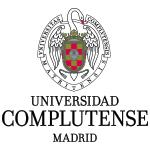Detection and isolation of Campylobacter from different matrices using five protocols
Comunicación presentada en AHVLA International Conference 2011
15 de septiembre de 2011
Ugarte-Ruiz M., Gomez S., Garcia M., Comeron MC., Castilla C., Porrero MC. y Dominguez L.
In 2009, campylobacteriosis was the most commonly reported foodborne zoonoses with 198.252 human cases notified and around nine million non-reported cases each year. The most frequently reported Campylobacter species was Campylobacter jejuni (36.4 %), while the confirmed cases of Campylobacter coli accounted for 2.5% (EFSA 2011).
We have evaluated different isolation and detection protocols, including ISO 10272: 2006- part 1 recommended for detection of Campylobacter in foods. We tested four different matrices: faeces, neck skin, packed fresh meat and sewage water (n=114). The isolation and identification of Campylobacter using conventional methods is slow and laborious, owing to its fragility and special culture requirement, including a microaerobic atmosphere. Moreover, the detection of Campylobacter is often difficult as the culture conditions need to be selective enough to avoid overgrowth of competitive organisms. Four different microbiological methods were compared, including three enrichment media; Bolton, Preston and Campyfood broths. In addition, two selective plating agars were evaluated; modified charcoal cefoperazone deoxycholate (mCCDA) and Campyfood agar (CFA). These methods were compared to a real time PCR assay, which yielded the highest number of positive samples (112/114; 98.24%). Regarding to microbiological techniques, a lesser detection ability was observed (98/114; 85.96%). Herein, we describe the best protocols for the isolation of Campylobacter from different matrices and an effective method for all of them. We have attained the isolation of a high number of Campylobacter strains which represents an essential source for our ulterior molecular characterization studies
 | Servicio de Zoonosis de Transmisión Alimentaria y Resistencia a Antimicrobianos (ZTA). Centro de Vigilancia Sanitaria Veterinaria (VISAVET). Universidad Complutense (UCM). |
 | Departamento de Sanidad Animal. Facultad de Veterinaria. Universidad Complutense (UCM). |
Enlace a AHVLA International Conference 2011


